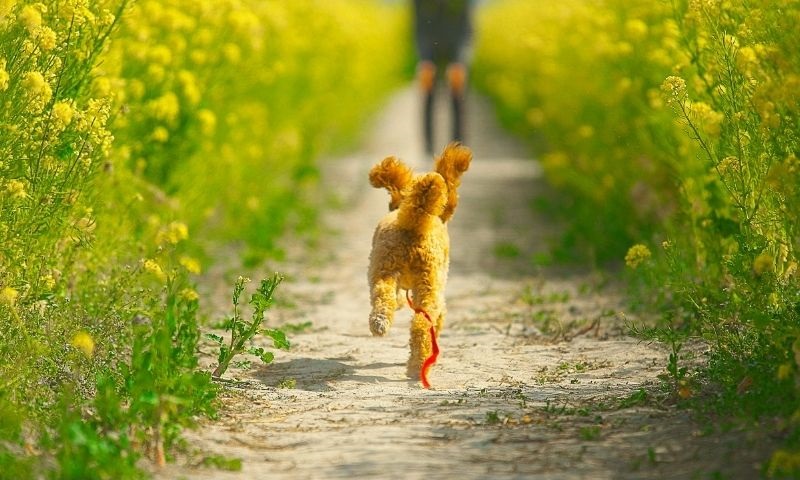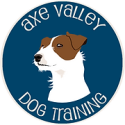Train a recall your prey-driven dog can actually follow.
If your dog hears “Come!” and responds with… absolutely nothing… you’re not alone.
For dogs with high prey drive, recall can feel impossible.
But it isn’t.
Not when you understand what’s going on inside your dog’s brain and how to work with it.
This guide will help you build a recall that’s not perfect (because that’s not real!) — but reliable, strong, and trustworthy.
Let’s get you both there.

Can you teach a dog perfect recall?
Honest answer?
Not really — not even for the pros.
A “perfect” recall means a dog will choose you over:
- Deer
- Birds
- Rabbits
- Cow pats
- Other dogs
- And every exciting thing the world offers
That’s… a big ask.
The goal instead is:
A reliable recall based on understanding your dog’s limits.
Even the best trainers:
- Use leads in high-risk environments
- Read their dog’s body language
- Know when not to call
- Choose safe, sensible environments for off-lead time
This isn’t lowering standards.
It’s respecting instincts.
How to teach a dog perfect recall? (…or as perfect as possible!)
1. Teach a solid “leave”
A good ‘leave’ starts simple and gets harder in small steps. Here’s the short version:
Stage 1 — Start with food in your hand
- Hold a piece of food in your closed fist.
- Let your dog sniff, lick, paw — don’t move your hand away.
- The moment they look away or back off, mark (“Good!”) and reward from your other hand.
- This teaches: ignoring the thing = reward from you.
Stage 2 — Food on the floor
- Place food on the floor, covered with your hand or foot if they dive in.
- When they look away, mark and reward from your other hand.
- Don’t reward with the food they’re leaving — it must always come from you.
Stage 3 — Add the cue
- When your dog reliably backs off the food, say “Leave” just before you put it down.
- Now the word predicts: don’t take that thing — look to me instead.
Stage 4 — Practise everywhere
- Different rooms
- Garden
- Outdoors
- BUT: don’t use “leave” on real-life prey yet.
Stage 5 — Food with legs!
- Have someone gently roll or toss the food.
- Say “leave”; if your dog goes for it, the helper picks it up first or covers it with a foot. This can be done on a lead if you’re not confident of getting there before your dog does!
- Reward your dog from your hand when they choose to disengage.
Stage 6 — Real-World ‘Leave’ (prey, squirrels, pheasants, etc.)
This is where most progress happens — but it must be controlled.
- Put your dog on a lead in the environment where prey appears.
- As soon as your dog spots the trigger, say “Leave.”
- They may lunge/bark toward it — that’s normal.
- Say nothing, stay calm, and wait.
- When they eventually turn back to you, mark it and give an amazing reward.
- Keep practising until they begin turning to you before the prey disappears — that’s your breakthrough.
As they improve:
Move to a long line (but never near roads, bikes, or traffic).
While teaching it:
- Keep your dog on lead in prey-heavy areas
- Prevent chasing practice (this matters more than anything)
- Pair “leave” practice with calm, low-distraction settings first
Want the full instructions?
Download my complete Leave It Training Handout (PDF) below.
2. Embrace the fact your dog LOVES the chase
Chasing releases adrenaline and feel-good hormones.
This means:
- It’s thrilling
- It’s rewarding
- It’s self-reinforcing
- They’ll do it again… and again…
So instead of fighting it, you harness it (just like we covered in Prey Drive in Dogs: What it is and how to manage it).
Use chase, play, sniffing, shredding and possession as rewards — that will make YOU more interesting than the environment.
How to build your dog’s recall training
Step 1: Build skills at home
Practise recall:
- On and off lead
- Using extremely high-value rewards
- Reward every recall, even slow ones
- Make it fun, not formal
Step 2: Move outside on a regular lead
If you think they won’t listen — don’t recall.
Instead:
- Move into their eyeline
- Wait for them to glance at you
- Jog away
- Say your cue when they follow
- Reward heavily
Step 3: Transition to a long line
This is your safety net.
- Recall at achievable moments
- Reward spontaneous, voluntary recalls
- Pay them well — even if they take their time
Step 4: Avoid poisoning your recall
You can accidentally teach your dog that “Come!” means something bad is about to happen.
Avoid:
- Calling only when the walk is ending
- Calling them away from fun then scolding them
- Using the same boring treat every time
- Using recall right before clipping on the lead
- Asking them come away from things they find threatening, scary, or concerned about – have you ever had prickly feelings when being followed? Could you ignore it?
Your dog should think:
“Coming back could be AMAZING!”
Salmon today? Tug toy tomorrow? A wild flirt-pole chase?
Who knows! Better come running to find out.
What to do when your dog ignores your recall
Key points:
- Don’t repeat yourself — instinctive dogs won’t hear you
- Don’t punish slow recall
- Don’t chase them
- Don’t yell
Instead:
- Encourage them to chase you
- Practise in easier environments
- Lower expectations temporarily
- Build value back into the recall cue
- Go back to long-line training
And always:
ALWAYS put your dog on a lead around livestock.
Even with excellent recall.
It’s simply never worth the risk.
Want to dive deeper? Here are a few blogs that pair perfectly with this one:
Prey Drive in Dogs: What It Is And How To Manage It
Still Struggling with Loose Lead Walking? These 4 Things Might Be Getting In The Way
